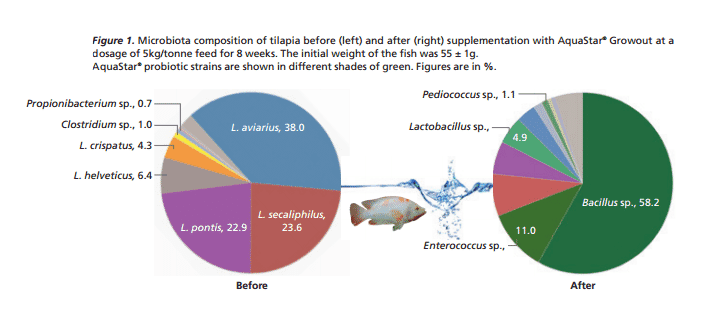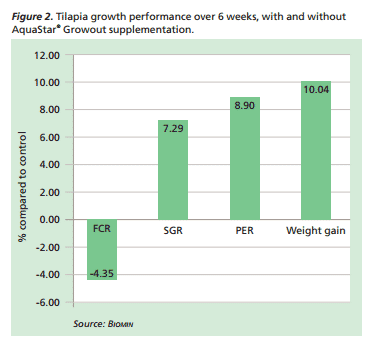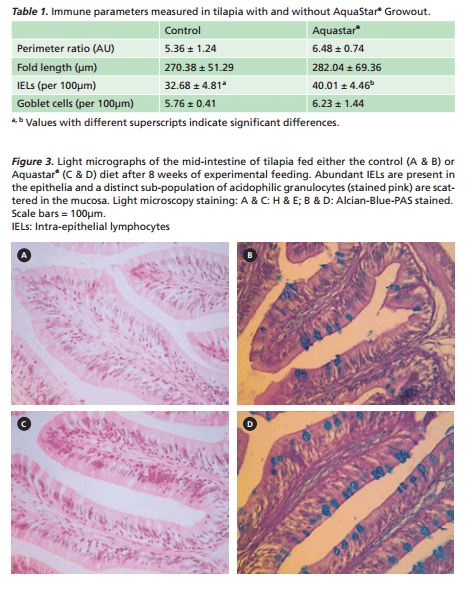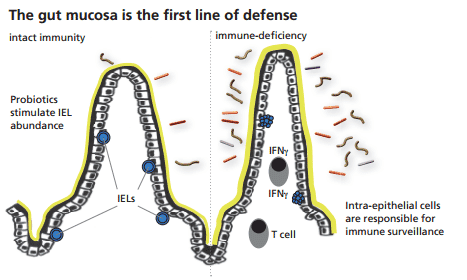In the aquatic world, potential pathogens are able to maintain themselves in the external environment of the animal (water) and proliferate independently of the host animal. These potential pathogens are taken up constantly by the animal through the processes of osmoregulation and feeding.
Based on the intricate relationship of aquatic organisms with their external environment, probiotics in aquaculture are defined as live microbial adjuncts that exert beneficial effects on the host by one or more of these mechanisms:
- Modifying the host-associated or ambient microbial community
- Ensuring improved feed use by enhancing its nutritional value
- Enhancing the host defense against diseases
- Improving the quality of its ambient environment.
Modifying the Ambient Microbial Community
Once established in the gut, probiotic bacteria can produce extracellular enzymes that improve digestion or aid in pathogen defense by producing inhibitory compounds. The prerequisite for any direct beneficial effect in the host is the establishment of the probiotic bacteria as part of the indigenous gut microbiota.
Figure 1 demonstrates that in juvenile tilapia (Oreochromis niloticus), the application of AquaStar® Growout led to an efficient colonization of the gut. AquaStar® bacteria (green) were detected over two weeks after the end of the probiotic treatment, although at rapidly declining levels. As intestinal bacteria proliferate in the gut, they improve the nutrient utilization and lead to better nitrogen retention in the body. Probiotics reduce the nitrate content of feces and the impact on the environment through lower waste discharge. It is likely that the environmental benefits also extend to the quality and quantity of the phytoplankton populations in the pond.
Improved Feed Value
Several probiotic strains produce digestive enzymes, thus facilitating feed utilization and digestion. As a result, growth performance is improved. Figure 2 shows tilapia growth parameters after supplementation with AquaStar® Growout. The average weight as well as specific growth rate (SGR) increased significantly. Protein efficiency ratio (PER) was higher and feed conversion ratio (FCR) improved.
Enhancing the immune response Fish immune cells do not need priming. They immediately release cytokines that kill infected target cells. Probiotic organisms can stimulate this innate immune response as demonstrated in Table 1 and Figure 3. A higher level of intra-epithelial lymphocytes (IELs) suggests an elevated localized immunological response (Table 1).
November 2014






